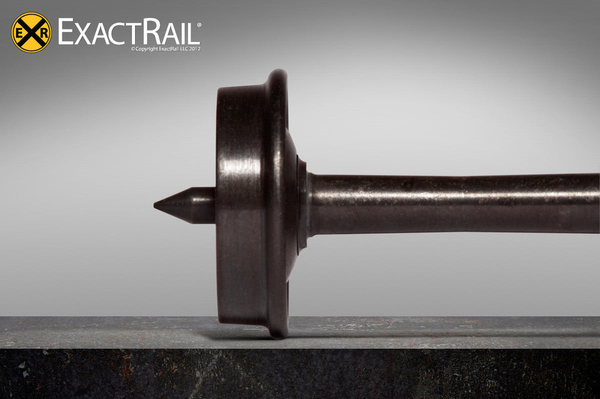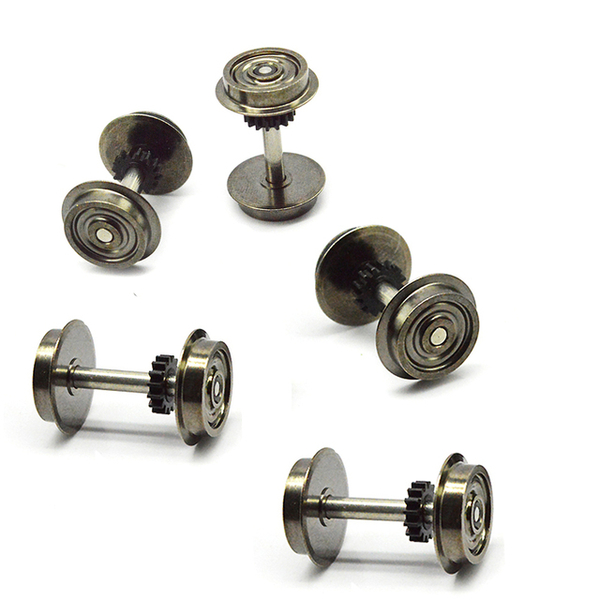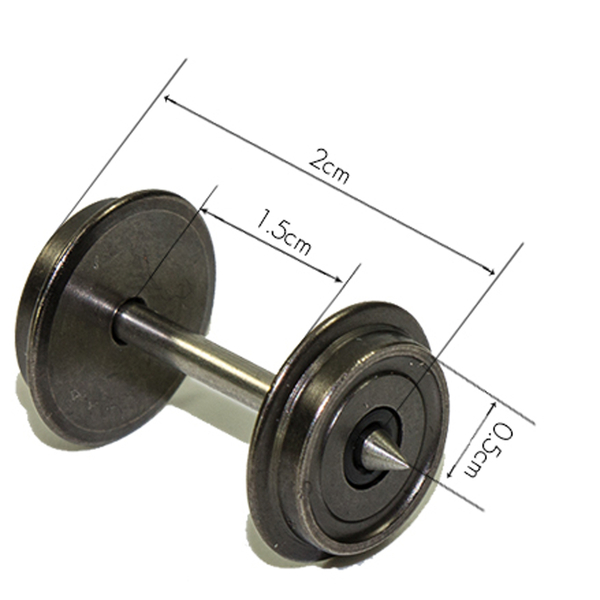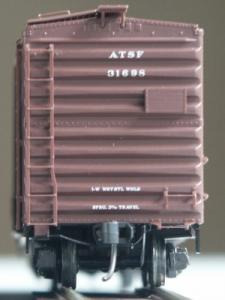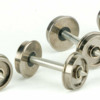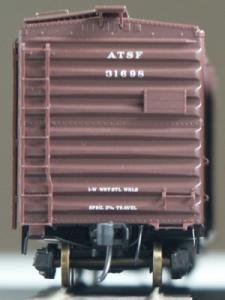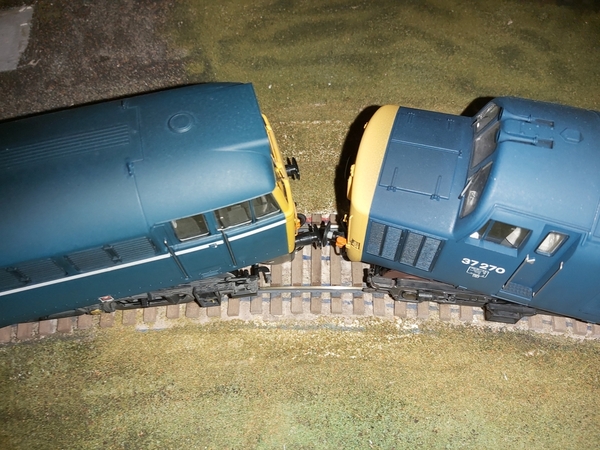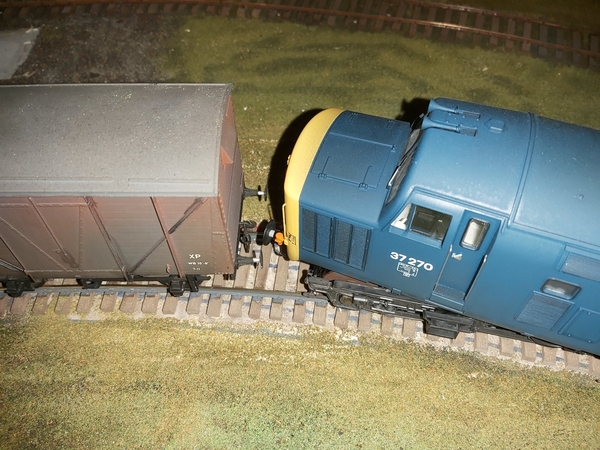As the original poster, I want to thank everyone of who has contributed to this thread. I asked the questions because I wanted to understand why OS2R isn't more appealing to model railroaders. I define model railroaders as people who are in the hobby in any scale and those who are re-entering the hobby, who plan to build or participate in a club layout. Model railroaders intend to run trains.
I don't define people who buy and display or store trains in their basement as model railroaders. These people are collectors. They are an important part of the hobby. They support dealers and manufacturers and purchase much of the product. I am a TCA member and many collectors are my friends.
I went through every post as of today (Monday afternoon, April 18, 2022) to see what people have said about this topic. There have been 113 replies to my original post as this time. I was not overly meticulous because I don't have the time. This is what I found:
1. Space: Mentioned or debated 39 times. Many posters said that OS2R requires more space than most people have available to build a layout. This included discussions about the minimum required radius. Of course, minimum radius directly correlates to the space to operate on a circle of track to run a given engine or car. Big steam and scale length passenger cars require OS2R curves. Some people argued that modelers don't need to run big power. If you are modeling the UP, however, you most likely want big engines.
2. Control: Mentioned or debated 20 times: I was surprised by the AC, DC, DCC debate/discussion. Unlike 3-rail and the smaller scales, the OS2R community has not embraced a standard control or operating system. This is true. Every HO and N scale person that I know and every club uses DCC. Many or most OS2R layouts are still using DC or a combination of DC and DCC. The combination of DC and DCC was tried on my HO club's layout and didn't work well. The club is now DCC only. I don't think DC/DCC works well on any operating layout with reverse loops and complex track arrangements.
3-rail, in my opinion, has too many command control options. I am primarily a 3-rail operator. I have 5 incompatible operating systems. Incompatible to me means that I can't use the same controller across the board on each system. This is a considerable expense with controllers costing about $200 plus or more.
3. Product Availability: Mentioned or debated 14 times. I believe that it is true that OS2R community has enough product to satisfy everyone but it is not readily available. You generally can't purchase it from major internet dealers (Charles RO, Train World, Mr. Muffin, etc.). Yes, you can get it at O scale shows, but how many people outside the OS2R community attend O scale only shows? Product is usually not available at general interest train shows such as NMRA conventions. I have attended a lot of NMRA conventions.
4. Expense: Mentioned or debated 11 times. Some people said that the expense of brass and other 2ROS equipment is too expensive for the average model railroader. Others said you can find reasonably priced product but you really need to search for it on eBay, internet auctions, etc. One person mentioned that there are no reasonably priced 2ROS starter sets for the beginner.
5. Track Work: Mentioned or debated 7 times. There was debate that OS2R track needs to be perfect for reliable operation. This was countered by a video showing a train running on some awful track. I think the basic problem is that OS2R does not have a reliable, easy to lay, track system like Lionel's Fastrak or Kato's N scale sectional track.
6. Proto 48: Mentioned or debated 4 times. People argued that if O2SR was Proto 48 it would be a more attractive scale for model railroaders because the models would be more accurate. I think that this train has left the station and that OW5 will remain the standard for manufacturers and modelers. Too much stuff has already been made to OW5 standards.
7. Visibility: Mentioned or debated 4 times. One person mentioned that he did not know OS2R even existed when he started in O gauge model railroading. I believe that OS2R is invisible to the majority of model railroaders and that this is a factor in why it is not more popular. I have never seen an OS2R modular layout at a NMRA convention. I have seen great layouts in all other scales from Z to G and Lego. OS2R has almost no visibility on the internet compared to other scales.
8. Hobby Shops: Mentioned or debated 4 times. People said that hobby shops don't carry OS2R product. I would say that model railroad hobby shops are few and far between for any scale. People will need to search the internet and buy from internet retailers.
9. Inertia: Mentioned or debated 5 times. Modelers generally begin in one scale and won't change scales because of their existing investment. This is partially true in my view. There are many circumstances when modelers have changed scales. Some have gone from N to O gauge. Many have a couple of gauges that they work on. My brother, for example, models in HO and On30.
10. Work Around: Mentioned or debated 3 times. People felt that OS2R was too difficult for beginners and experienced modelers alike because people had to do work arounds to get operating models. This included converting 3-rail equipment to 2-rail. I believe that this generally true. Most of my model railroad friends want to buy a model, put it on the track, and run it. Yes, there is a work around for everything but .......
11. Operations: Mentioned by 1 person. I was surprised that only one person mentioned operations. Maybe this is one of the basic reasons that OS2R is not more appealing. OS2R layouts that I have seen are generally loop running. Many of them still use a central control panel and DC block control.
My experience in 3-rail O, HO, N, and G gauges is that DCC and other control systems have revolutionized the hobby. Contemporary modelers want to control their trains, switch, see smoke from steam engines, realistic lights, etc. They want to walk around the display and control their trains. Everyone in my HO club who is under 30 uses their cell phone to run trains. I use my cell phone when I forget and leave my NCE controller at home. One of the most popular activities in all the other scales are operations.
Too many OS2R layouts are stuck in the DC block era. I believe that the attraction of OS2R will remain stagnant until this changes.
12. Modeling: Mentioned or debated by 7 people. A few people argued that OS2R is a modelers hobby because of its size and detail. As I said, however, DCC has changed everything. Modeling is less important today than it was in the past in my opinion. This is the reason Woodland Scenic and Menards buildings are very popular. The majority of modelers want to run trains instead of building models. I have only built one model in the last 10 years and most of the members of my model railroad club haven't built a single model of anything, from a building to a tree.
Modeling is an enjoyable activity and is good for those who want to do it. However, if you want to attract people to the hobby, they need to see operating trains, not beautiful models. A modular layout with Menards buildings is better than no railroad because a modeler is taking forever to craft a spectacular building.
That is a summary of the comments. I welcome your comments about this. I plan to post my thoughts on what to do to make OS2R more appealing in a few days.
NH Joe




